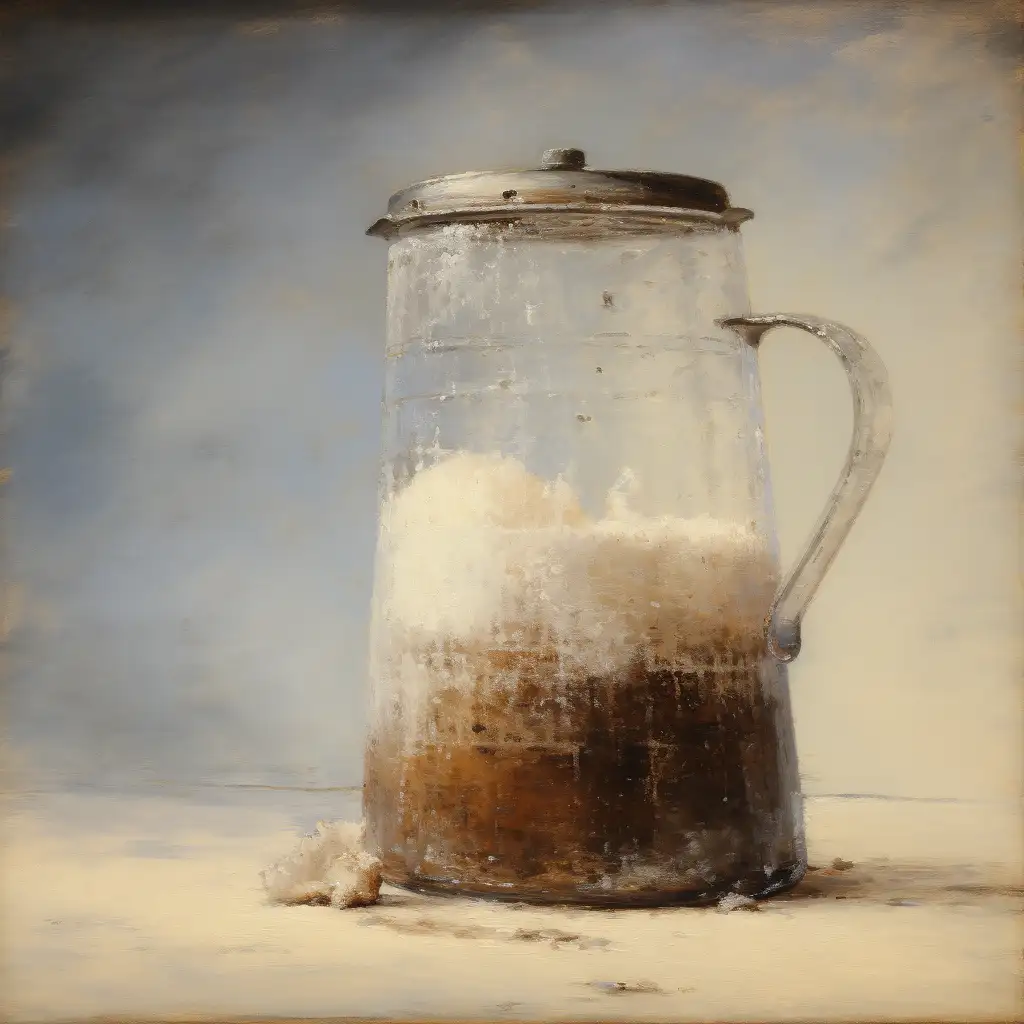
Be sweet. Be AI
Wir beginnen einmal nicht mit Metaphysik oder harter Physik, sondern ganz salopp mit unseren altbekannten Naturwissenschaften: Da gibt es zu berichten, dass es auch auf molekularer Ebene eine Verbindung zwischen der chemischen Struktur von süßen Substanzen und ästhetischen Prinzipien gibt. Zum Beispiel weisen Zuckermoleküle, wie Glukose und Fruktose, wie sie etwa in Süßigkeiten enthalten sind, eine spezifische Symmetrie in ihrer molekularen Struktur auf. Nun sagen uns die Naturwissenschaftler, dass diese Symmetrie dafür sorgt, dass sie von unseren Geschmacksrezeptoren optimal erkannt wird, was den süßen Geschmack auslöst.
So, ehe jetzt der letzte Geisteswissenschaftler die Lektüre beendet, kommen wir auch zum Punkt: Zucker kristallisiert vor allem in bestimmten, geordneten Strukturen, die eine Form von Symmetrie darstellen. Solche molekularen Eigenschaften beeinflussen nicht nur den Geschmack, sondern auch, wie angenehm und „süß“ wir diese Substanzen empfinden.
Somit gibt es eine faszinierende Verbindung zwischen der Liebe zu Süßem, die durch evolutionäre und biochemische Mechanismen gefördert wird, und der ästhetischen Wahrnehmung, die auf mathematischen und strukturellen Prinzipien basiert. Die Symmetrie und Ordnung auf molekularer Ebene tragen zur Intensität und Attraktivität des süßen Geschmacks bei, was unsere Vorliebe für Süßes sowohl physiologisch als auch ästhetisch verankert.
Das war jetzt ein langer Einstieg für ein kurzes Ende: Das weiter oben lancierte Bild wirkt süßlich – weil es die besprochenen Symmetrien in seiner Bildsprache umsetzt. Hier und da sind die Figuren also symmetrisch, zumindest bei genauerer Betrachtung. Wir Menschen lieben das eigentlich (nicht nur kulinarisch), aber es kann auch zu süßlich werden, dann nennen wir es Kitsch. Das hier verwendete Bild findet sich auf der Schwelle zu eben diesem, und das aus gutem Grund, denn es sollte diesen Aufsatz bebildern. Der Autor hofft, die geneigten Leser und Leserinnen nicht gelangweilt zu haben – und wünscht noch weitere süße Stunden.
/// /// /// ///
Sweetness in Life and in AI
Let’s not start with metaphysics or hard physics this time, but instead with our good old natural sciences: It’s worth noting that there is a connection on a molecular level between the chemical structure of sweet substances and aesthetic principles. For instance, sugar molecules like glucose and fructose, as found in candies, have a specific symmetry in their molecular structure. Scientists tell us that this symmetry allows our taste receptors to optimally recognize them, which triggers the sweet taste.
So, before the last humanities scholar decides to put this reading aside, let’s get to the point: Sugar primarily crystallizes in certain ordered structures that represent a form of symmetry. Such molecular properties not only influence taste but also how pleasant and „sweet“ we perceive these substances to be.
Thus, there is a fascinating connection between the love for sweetness, which is encouraged by evolutionary and biochemical mechanisms, and aesthetic perception, which is based on mathematical and structural principles. The symmetry and order on a molecular level contribute to the intensity and attractiveness of the sweet taste, which anchors our preference for sweetness both physiologically and aesthetically.
That was a long introduction for a short conclusion: The image presented above looks sweet because it implements the discussed symmetries in its visual language. The figures are symmetrical here and there, at least upon closer inspection. We humans generally love this (not just in culinary terms), but it can also become too sweet, at which point we call it kitsch. The image used here is on the threshold of that and for a good reason—because it was meant to illustrate this essay. The author hopes that the dear readers were not bored—and wishes you more sweet moments.
Related Posts
Weihnachten kommt – mit KI
Weihnachten & KI Weihnachten hat nichts mit Intelligenz oder kü
Der Dezember wird kalt. Zeit für heiße Cold brew & Kunst und KI
Semper viverra nam libero justo laoreet sit amet. Pulvinar etiam non q
Der Woke Hund
Semper viverra nam libero justo laoreet sit amet. Pulvinar etiam non q
KI & Roboter – Huhn & EI
Die Frau, Eva – oder der Mann, Adam? Ernste Spaßvögel weisen darau
Die Sinnlichkeit in der KI
Semper viverra nam libero justo laoreet sit amet. Pulvinar etiam non q
Santa
Die Figur des Weihnachtsmanns ist im Grunde eine lange Wanderung durch






